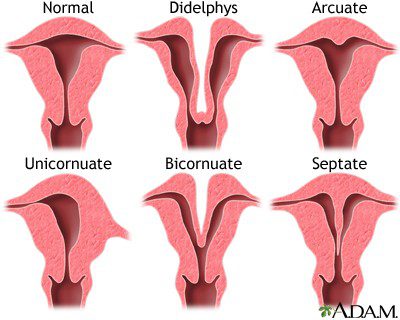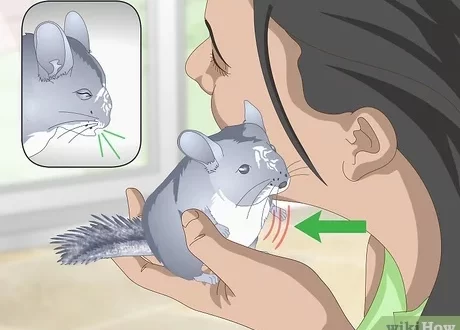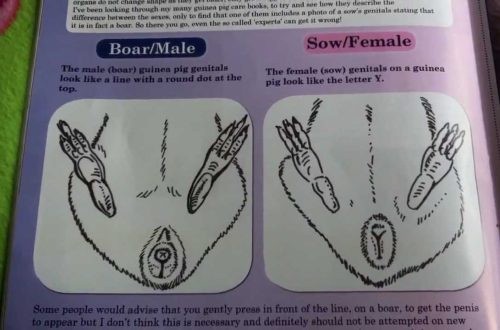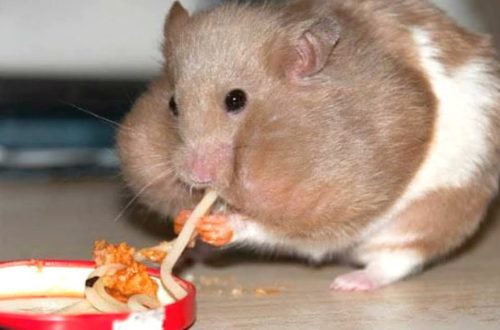
Diseases of the genital organs
Contents
Ovarian cyst
Ovarian cyst is the most common disease of the genital organs of guinea pigs. It occurs in 80% of females opened after death. In general, the disease has no clinical manifestations, however, sometimes symmetrical hair loss on the sides is observed in animals, caused by hormonal changes, the cause of which is cystic changes in the ovaries. Sometimes you can feel a cyst the size of a pigeon’s egg. Treatment is needed only when the disease has a clinical manifestation (such as the hair loss described above) or if the cyst becomes so large that it begins to have a negative effect on other organs. Since it cannot be reduced by medication, guinea pigs are often castrated. To do this, the animal is euthanized (as described in the chapter “Anesthesia”), placed on its back and castrated, making an incision along the midline of the abdomen in the umbilical region. To keep the incision small, it is recommended to pre-empty the ovarian cyst by puncture. Then it is easier to bring the ovary into the position of presentation with the help of a hook and take it away.
Further treatment for hormonal alopecia is injections of 10 mg of chlormadinone acetate, which must be repeated every 5-6 months.
Violations of the birth act
Violations of the birth act are rare in guinea pigs, this occurs if the cubs are too large, and also if the female is too early to be used for reproduction. Diagnosis can be made with an x-ray. However, in most cases it is already too late to start treatment. Guinea pigs are brought to the veterinarian already very weakened, when the chances that they will be able to withstand a caesarean section are very small.
In most cases, blood-brown discharge from the vagina can already be seen. The animals are so weak that they die within 48 hours.
Toxicosis of pregnancy
Pregnant guinea pigs receiving inadequate food or insufficient amounts of vitamins develop toxicosis a few days before or shortly after birth. Animals lie on their side in an apathetic state. Here, too, death occurs, usually within 24 hours. Protein and ketone bodies can be detected in urine, urine pH ranges between 5 and 6. As a rule, it is too late to start treatment; the body no longer perceives injections of glucose and calcium. As a preventive measure, it is recommended to give animals food rich in vitamins during pregnancy. Toxicosis of pregnancy occurs only in the case of a large offspring or if the cubs are very large.
Castration of male guinea pigs
After being put to sleep by injection (see the chapter on Anesthesia), the guinea pig is tied up on the operating table in the supine position; the operating field is shaved and disinfected. Male guinea pigs can move their seminal testicles into the abdomen due to the wide Anulus vaginalis, so that in some cases it is necessary to push the abdomen caudally to bring them into the presentation position. In the middle of the scrotum, parallel to the midline, a skin incision about 2 cm long is made. Now the testicles, epididymis and fat bodies are in a state of presentation. After removing the testicles, epididymis and fat bodies, a thin catgut ligature is applied, while paying attention to the fact that the ligature must also be applied to Prozessus vaginalis in order to prevent prolapse of the intestines and adipose tissue. A skin suture is not needed. The use of antibiotic powder is not recommended. However, animals must not be kept on sawdust for the next 48 hours. Instead, it is better to use newspaper or paper from “kitchen rolls” as bedding.
Ovarian cyst
Ovarian cyst is the most common disease of the genital organs of guinea pigs. It occurs in 80% of females opened after death. In general, the disease has no clinical manifestations, however, sometimes symmetrical hair loss on the sides is observed in animals, caused by hormonal changes, the cause of which is cystic changes in the ovaries. Sometimes you can feel a cyst the size of a pigeon’s egg. Treatment is needed only when the disease has a clinical manifestation (such as the hair loss described above) or if the cyst becomes so large that it begins to have a negative effect on other organs. Since it cannot be reduced by medication, guinea pigs are often castrated. To do this, the animal is euthanized (as described in the chapter “Anesthesia”), placed on its back and castrated, making an incision along the midline of the abdomen in the umbilical region. To keep the incision small, it is recommended to pre-empty the ovarian cyst by puncture. Then it is easier to bring the ovary into the position of presentation with the help of a hook and take it away.
Further treatment for hormonal alopecia is injections of 10 mg of chlormadinone acetate, which must be repeated every 5-6 months.
Violations of the birth act
Violations of the birth act are rare in guinea pigs, this occurs if the cubs are too large, and also if the female is too early to be used for reproduction. Diagnosis can be made with an x-ray. However, in most cases it is already too late to start treatment. Guinea pigs are brought to the veterinarian already very weakened, when the chances that they will be able to withstand a caesarean section are very small.
In most cases, blood-brown discharge from the vagina can already be seen. The animals are so weak that they die within 48 hours.
Toxicosis of pregnancy
Pregnant guinea pigs receiving inadequate food or insufficient amounts of vitamins develop toxicosis a few days before or shortly after birth. Animals lie on their side in an apathetic state. Here, too, death occurs, usually within 24 hours. Protein and ketone bodies can be detected in urine, urine pH ranges between 5 and 6. As a rule, it is too late to start treatment; the body no longer perceives injections of glucose and calcium. As a preventive measure, it is recommended to give animals food rich in vitamins during pregnancy. Toxicosis of pregnancy occurs only in the case of a large offspring or if the cubs are very large.
Castration of male guinea pigs
After being put to sleep by injection (see the chapter on Anesthesia), the guinea pig is tied up on the operating table in the supine position; the operating field is shaved and disinfected. Male guinea pigs can move their seminal testicles into the abdomen due to the wide Anulus vaginalis, so that in some cases it is necessary to push the abdomen caudally to bring them into the presentation position. In the middle of the scrotum, parallel to the midline, a skin incision about 2 cm long is made. Now the testicles, epididymis and fat bodies are in a state of presentation. After removing the testicles, epididymis and fat bodies, a thin catgut ligature is applied, while paying attention to the fact that the ligature must also be applied to Prozessus vaginalis in order to prevent prolapse of the intestines and adipose tissue. A skin suture is not needed. The use of antibiotic powder is not recommended. However, animals must not be kept on sawdust for the next 48 hours. Instead, it is better to use newspaper or paper from “kitchen rolls” as bedding.





